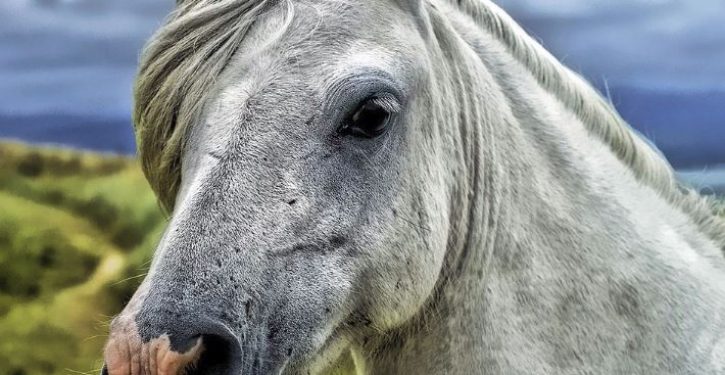
In Vermont, there are lush woods. As you wander through forests, “it’s not unusual to come across an old mossy stone wall, left from a time when Vermont, and the rest of New England, was mostly field and pasture…New England’s farms were reclaimed by tenacious pine, cedar, and birch.” That’s thanks to the automobile, notes Human Progress. “Before we had cars, we relied on horses and mules—millions of them. In cities, they carried riders, delivered goods, and pulled cabs, wagons, omnibuses, and fire engines. On farms, they cleared land, plowed fields, and turned mills. As America’s cities rapidly expanded, so too did their stables and those of the farmers that fed them.”
The population of horses and mules in America rose from 5 million in 1850 to 10 million in 1870 and 25 million in 1900, before peaking at around 28 million in 1910. Vast amounts of land were used for hay production to feed horses. “Nationally, the number of acres used for hay production grew from 30 million in 1880 to 72 million in 1909 and has since declined to around 55 million.” Much of that remained in New England, even as farmers of other types of crops moved west. Four million acres of land just in New England were used to grow hay from 1880 to 1909. But after 1910, those acres gradually stopped being used to grow hay as people shifted to using automobiles rather than horses:
This was mostly because hay has a relatively low value for its volume, making it less economical to transport long distances than something like grain. As long as there were horses in New England’s cities, much of their hay would be grown locally.
Horses began to decline in the early 20th century as cars and trucks (and, to some extent, electric streetcars) replaced the legions of draft and riding horses in cities. Farm horses were gradually superseded by tractors and trucks but persisted in large numbers until mid-century.
As Anne Green writes in Horses at Work, “Horse populations dropped off from east to west. After 1910 the states with the largest horse populations were all west of the Mississippi.” By 1949, there were just over two million acres of hayfields left in New England, and by 2017, fewer than one million.
From a conservationist’s perspective, cars beat horses because of energy density. A well-worked draft horse could eat 30,000 calories of hay and oats each day, or the output of four acres of fertile 1930s cropland. A modern delivery van driving 100 miles a day (doing the work of multiple teams of horses) might consume 10 gallons of diesel fuel, refined from a tiny fraction of a typical oil well’s daily production. Each gallon of diesel contains around 35,000 calories (if only horses could digest it) and comes from underground reservoirs, leaving the surface mostly untouched.
Cars also don’t have to be kept alive. An idle horse needs 10,000 to 15,000 calories per day just to keep breathing; an undriven car needs none. Electric vehicles have the potential to spare even more land. With a footprint of 12 acres—enough land for just three horses—California’s Diablo Canyon nuclear power plant can power over four million Teslas driving 40 miles a day (roughly the American average). That should hammer in how incredibly perverse it is that we use over 50 million acres of U.S. farmland to grow feedstock for biofuels.
Back in the 1930s, lamenting the horse’s decline and its economic effect on farmers, the Horse Association of America extrapolated from the 1900 horse-human ratio and calculated that 54 million acres of U.S. farmland had been spared by the automobile. The country’s population has nearly tripled since then, and we live much richer lives. If our cities were fed by horse plow and our packages delivered by horse cart, hundreds of millions of acres of our forests would now be meadow.
In other news, monarch butterflies are no longer endangered. A baby beaver was recently born in London for the first time in 400 years. Last year, beavers were reintroduced to England’s capital city as part of a flood management project. “The semi-aquatic rodents were hunted to extinction in the 16th century during the Elizabethan era as they were predominantly killed for their fur and meat.”
Recently, carnivorous plants were reintroduced to English wetlands.



